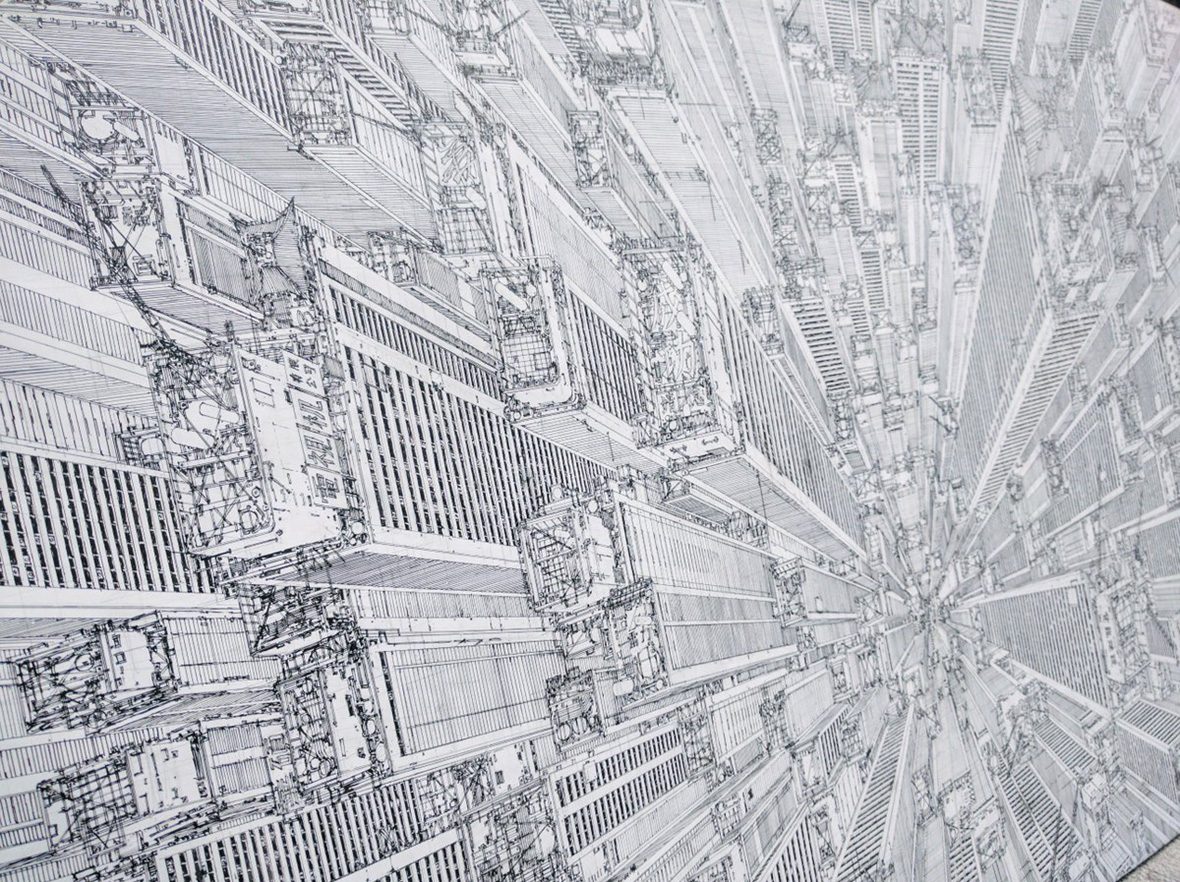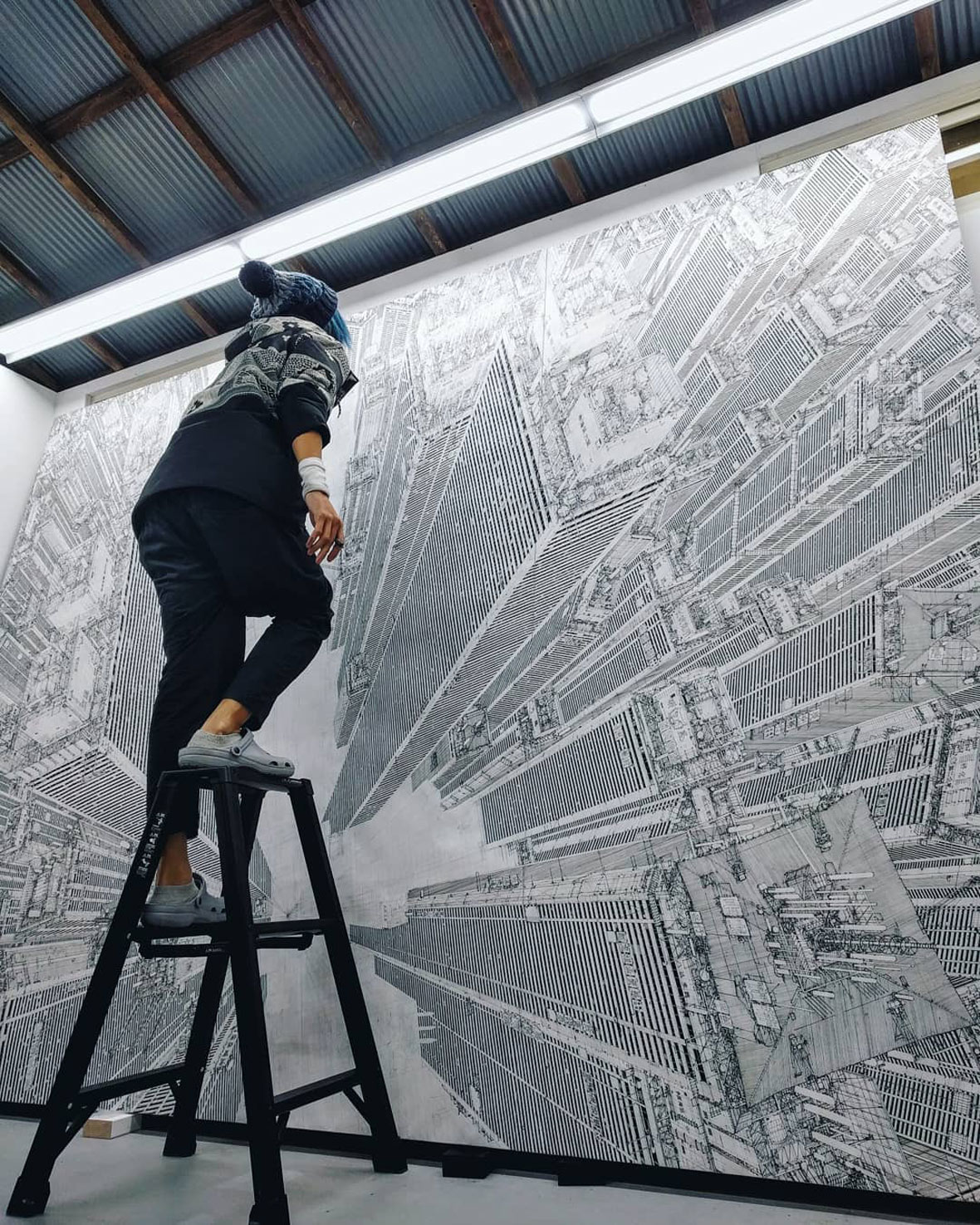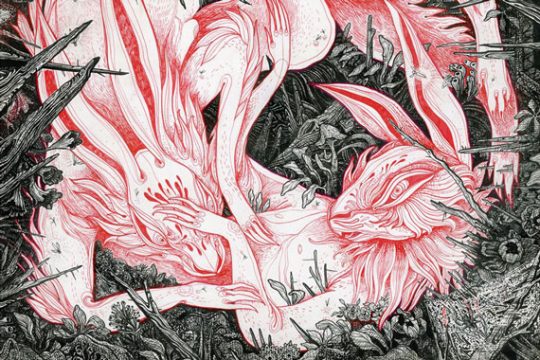
Daisuke Tajima’s black-and-white ink drawings have a hypnotic power that draws viewers in. It’s easy to get lost in the Japanese artist’s intricate cityscapes, whose repetition and towering size form endless valleys and unimaginable peaks. Exaggerated lines of perspective command attention, and the seemingly endless level of minutiae rewards a viewer’s scrutiny.
日本艺术家田岛大介的黑白水墨画有一种催眠的力量,令人为之深深吸引。细看田岛笔下错综复杂的城市景观,很容易迷失其中——重复且高耸的图形,构成了无尽的山谷和难以想象的山峰。夸张的透视线让人目光驻留,而无穷的细节描绘,则能让观者收获不少细枝末节的惊喜。
Tajima has always been an introvert; it’s a personality that fits the profile one might expect from such obsessively precise work. His withdrawn personality was considered weird by classmates at school but it’s proven to be a virtue in adulthood. “I always seem to disturb other people over everything,” he says. “For instance, when I played sports in school, I was the worst teammate. I started realizing how embarrassed I’d become in general society.” Slowly, he retreated into art without even realizing it; though doing art in isolation can often feel lonely, it was better than uncomfortable interactions with people who didn’t understand him.
田岛一直是一个内向的人,而这样的性格恰恰对应着人们所期望的:他从事着痴迷精确的工作。在学校里,性格孤僻的他常被同学认为是个怪人,但在成年后,这种孤独却被证明是一种美德。他说:“我似乎总是打扰别人。比如在学校集体运动时,我就是最差的队友。我开始意识到自己在社会上会变得多尴尬。”慢慢地,他在不知不觉中退回到艺术的怀抱里,虽然孤立地做艺术常常会感到孤独,但总好过与不理解他的人进行不舒服的交流。
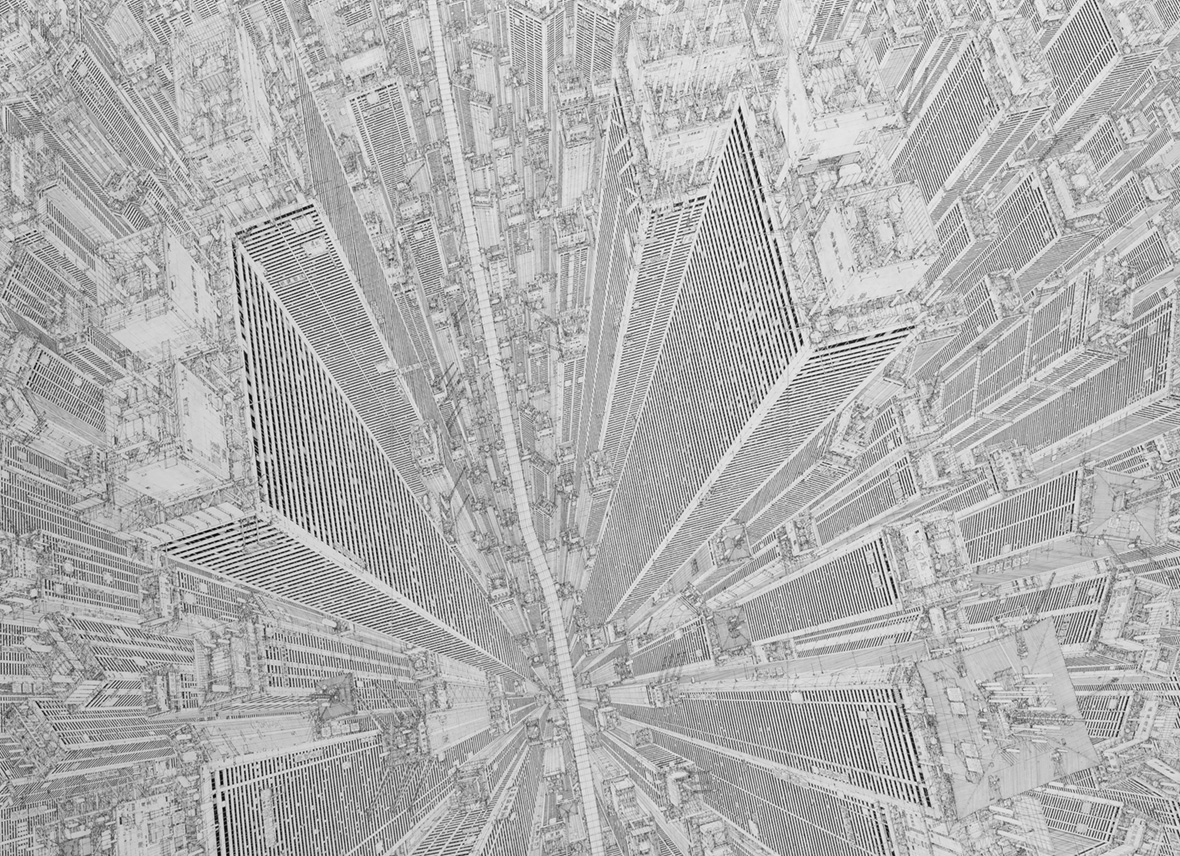
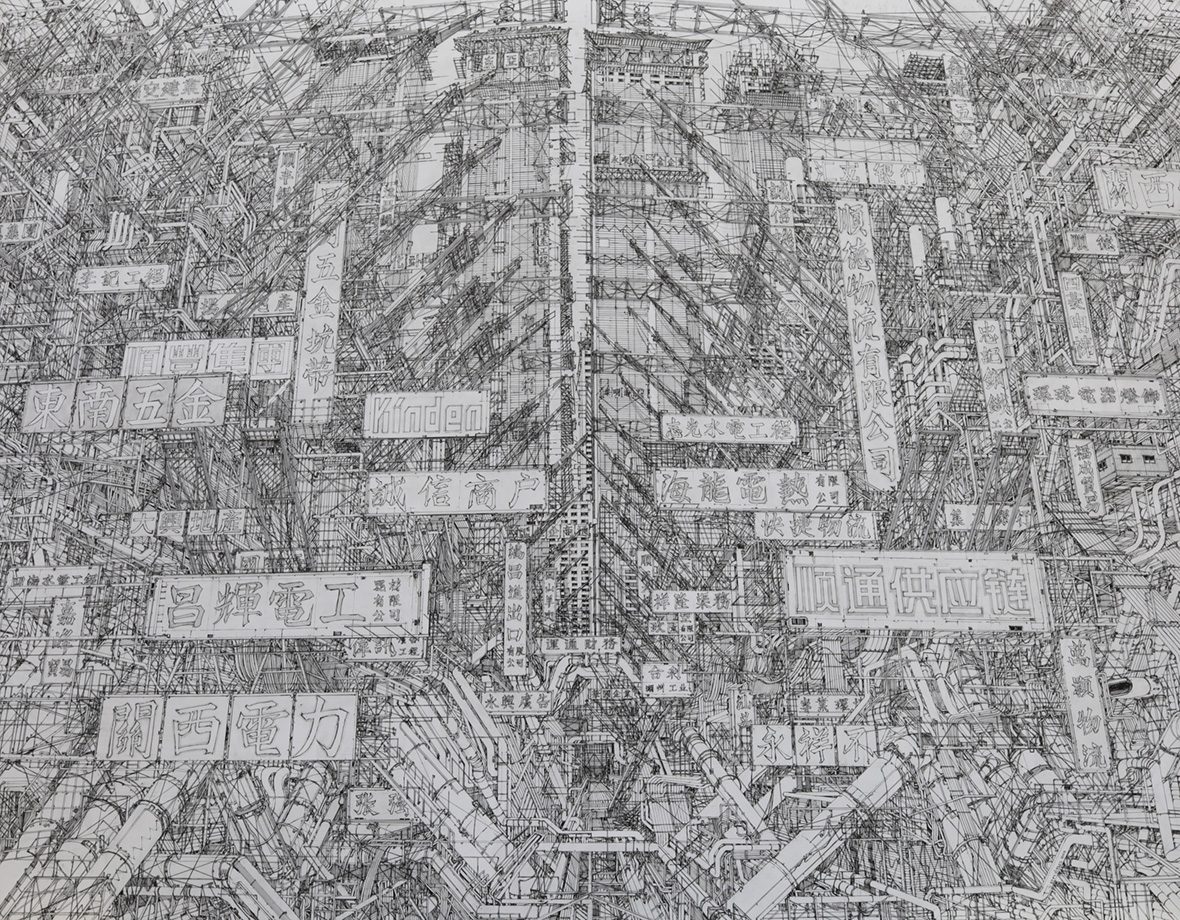
But as Tajima started gaining attention for his work in recent years, he began meeting more and more like-minded people he could be himself around. : “I feel I’ve found a connection with other people because of my art. I’ve reached people outside of my small community, even overseas.” He grew up and still lives in Nara, a city with a sparse population of artists and art lovers when compared with places like Tokyo or Osaka. . “Normally I don’t even encounter other guys my age because most have left. The only people I talk to in person here are my elderly neighbor and my mom. It’s pretty boring, but I’m able to focus on my art.” He’s nestled in at home, designing and constructing a black-stained, wooden garage studio next to his house where he spends the majority of his time.
但随着田岛最近几年的作品开始引起人们的注意,他认识了越来越多志同道合的朋友,让他可以做自己。“因为艺术,我觉得我已经找到了与其他人之间的联系。我接触到了我这个小社区以外的人,甚至海外的人。”田岛在奈良长大,与东京和大坂相比,这里依然是一个艺术家和艺术爱好者稀少的城市。“通常我甚至不会遇到和我年龄相仿的人,因为大多数年轻人都离开了。在这里我只能和我的老邻居和妈妈交谈。虽然很无聊,可我能专注于我的艺术。”他窝在家里,在他的房子旁边设计和建造了一个黑色的木制车库工作室,他大部分时间都在那里度过。
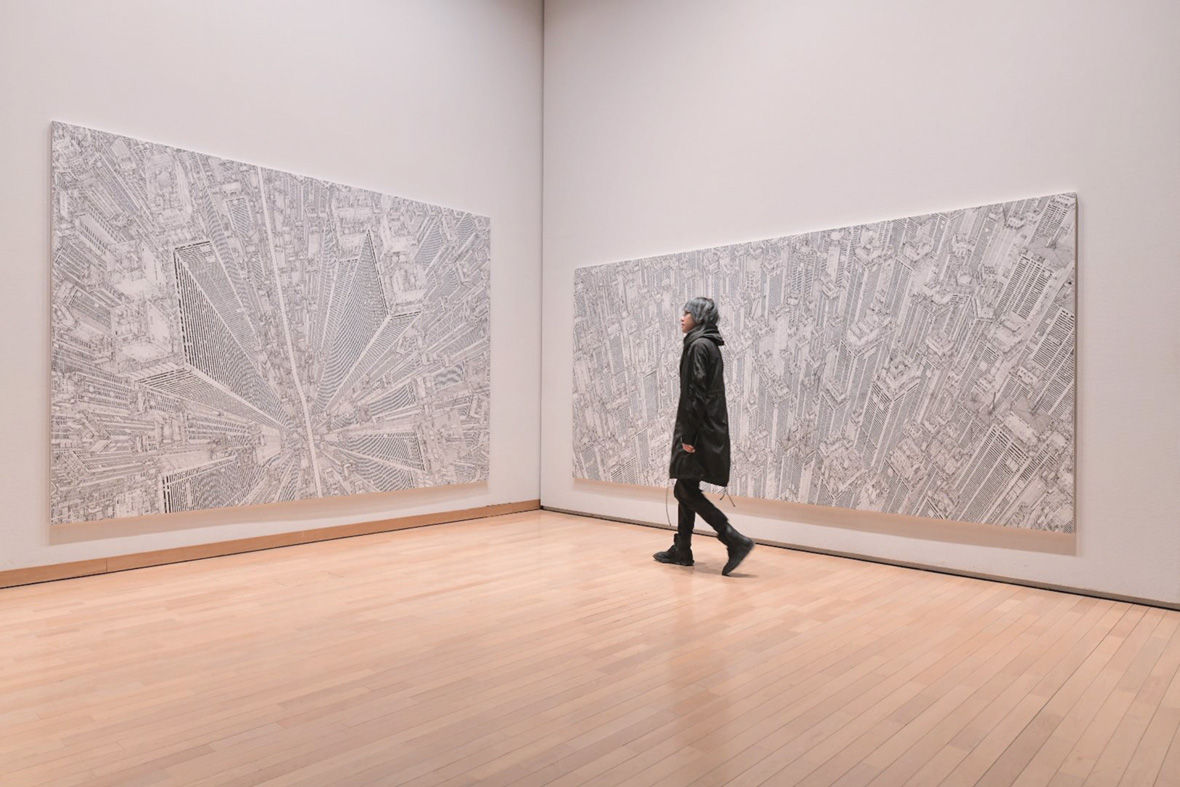
Solitude helps him work, and considering the amount of time his drawings take, it’s essential to his art. A three-meter wide aerial view of a city took him three months to draw, working seven hours every day. To create a large piece like that, he first does a series of small sketches, a process that helps him figure out the layout and composition. He then affixes a large piece of paper to the wall, sketches the preliminary drawing with pencil and ruler, and fills in the final lines with pen and oil marker. For many of the larger pieces, he has to use a ladder to reach the higher sections. “That’s why my back always hurts,” he laughs.
Through art, he’s been able to travel and see the cities across Asia that inspire his artwork. But he always comes back to his village, where he can face inward and focus on the work that’s helped him come to terms with his introversion.
孤独助长了他的艺术,考虑到他的绘画需要花费的时间,独处是必不可少的因素。他花了三个月的时间来画一幅 3 米宽的城市鸟瞰图,每天需要工作 7 个小时。为了创作出这样的大作品,他先画了一系列小草图以厘清布局和构图。然后再在墙上贴上一张大纸,用铅笔和尺子画出初步的草图,接着用钢笔和油彩笔在最后一行里填上。对于许多较大的作品,他不得不使用梯子到达更高的部分。“这就是为什么我总是腰酸背痛。”他笑着说。
通过艺术,田岛开始旅行,看到亚洲各地的城市,这也激发着他的艺术创作。但他总是回到他的家乡,在那里,他可以直面内心,专注于向内挖掘的艺术创作。
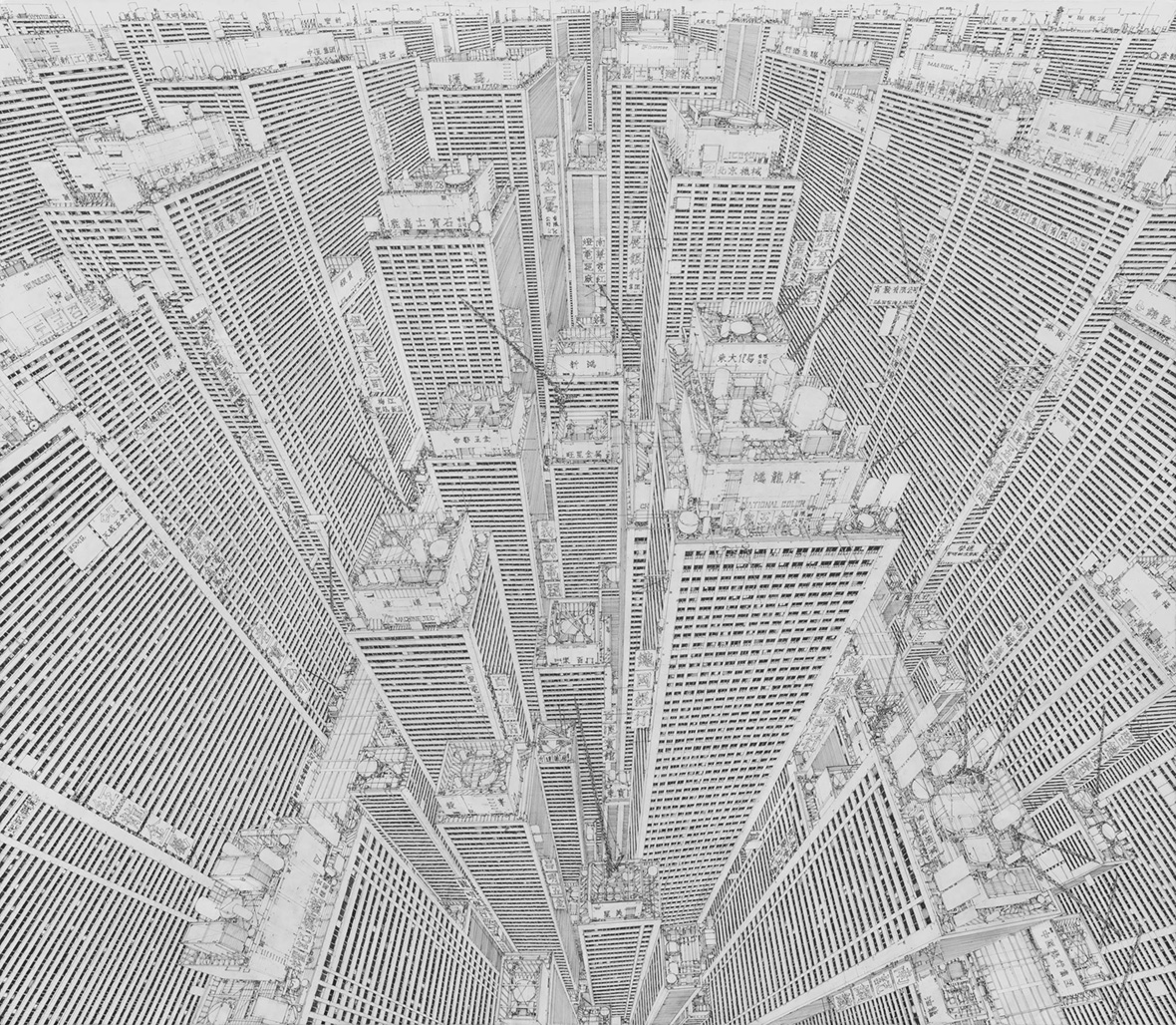
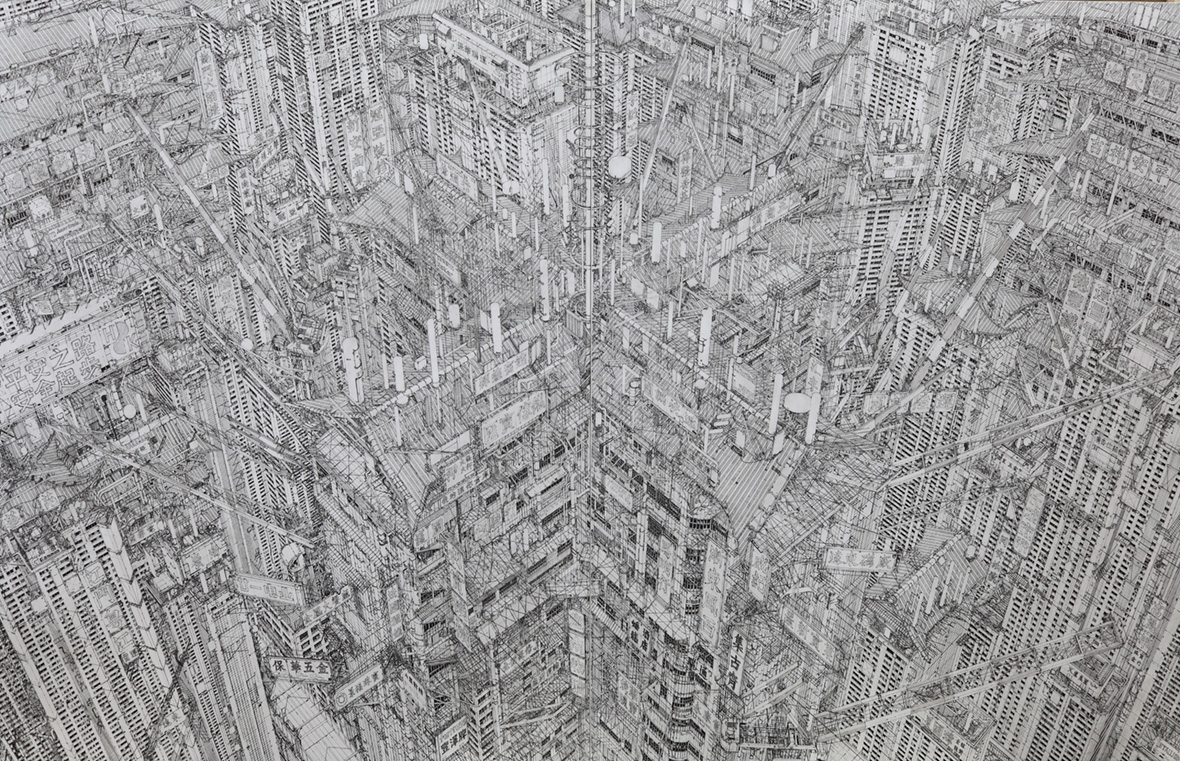
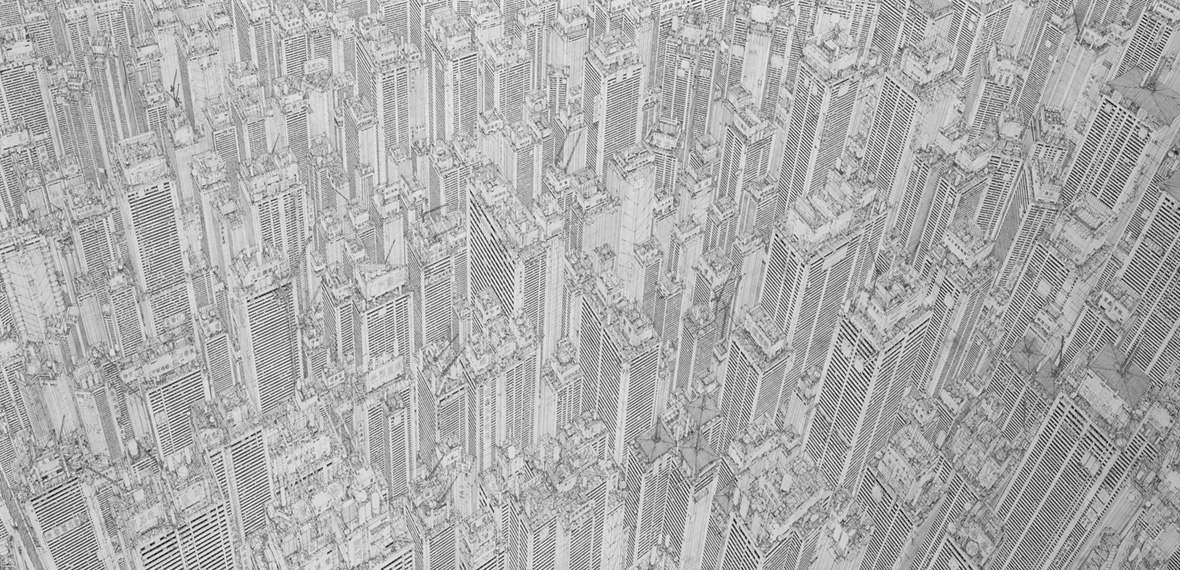
Like our stories? Follow us on Facebook and Instagram.
Website: www.taransan.web.fc2.com
Instagram: @tienda006
Twitter: ~/tin4dou2
Contributor: Mike Steyels
Chinese Translation: Chen Yuan
网站: www.taransan.web.fc2.com
Instagram: @tienda006
Twitter: ~/tin4dou2
供稿人: Mike Steyels
英译中: Chen Yuan

